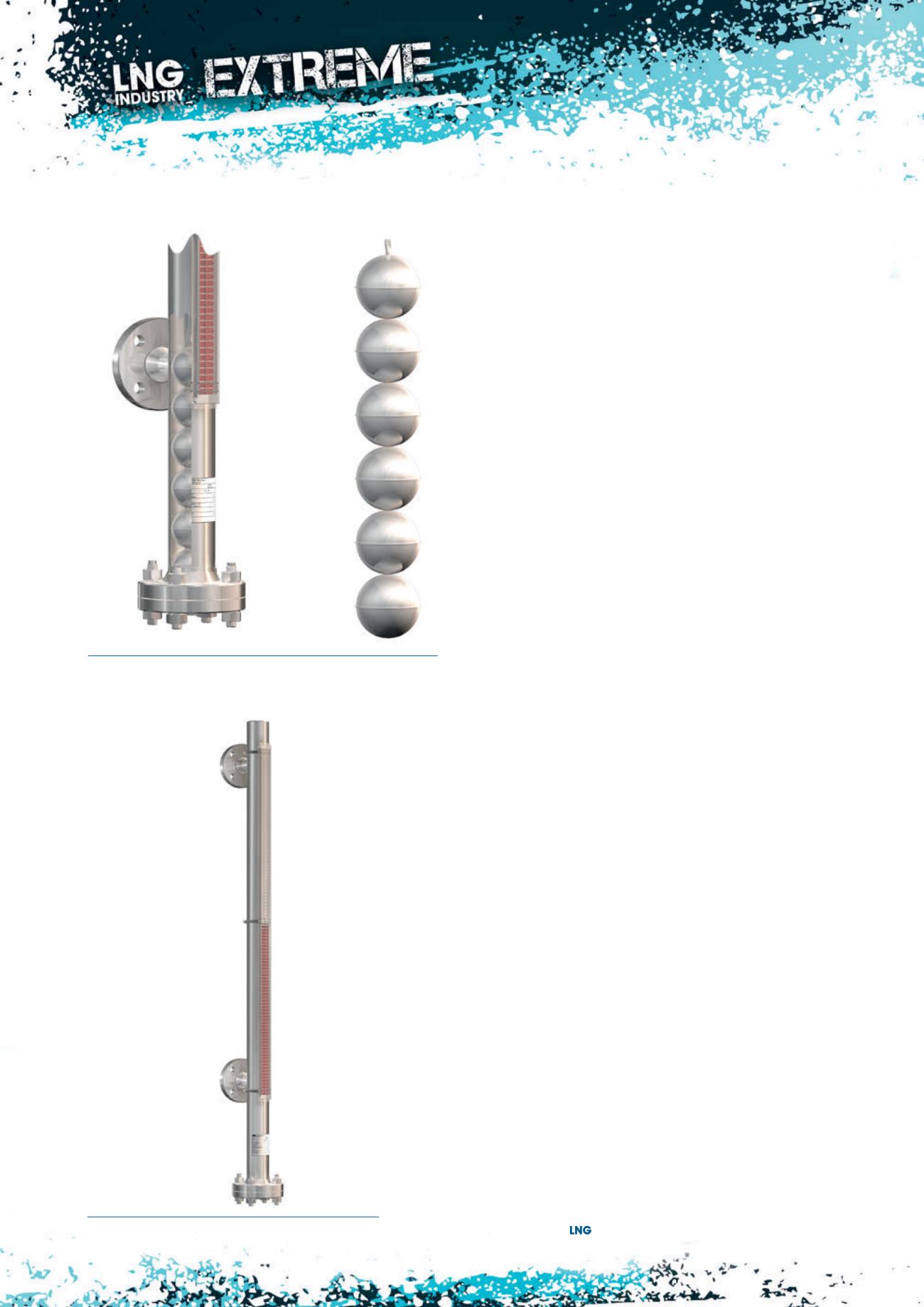
58
LNG applications
In general, it is possible to liquefy a gas with higher pressure (CNG),
reduced temperatures (LNG), or by a combination of both. LNG is
non-toxic and non-corrosive, but also odourless, colourless and highly
flammable, whichmakes it a hazardous substance. For applications
under European Directives, it has to be handled as PED fluid group 1
(dangerous liquids) andmust be classified under ATEX (respectively
IECEx or other classifications for non-EU countries).
Amajor challenge for float-based gauges is the density of the
liquid. LNG has a density from0.41 g/cm
3
to 0.5 g/cm
3
. To give the
float the necessary buoyancy, WEKA has developed a special type of
ball float. The incorporated bar magnet is lightweight, with a highly
magnetic horizontal force and long-term stability.
The float body contains the best ratio of mechanical strength,
corrosion resistance and weight. Amaterial used for the resistance
against high pressuremust be considered, due to occasional pressure
surges and bubbling in such applications, especially during start-up or
shutdown of the entire system.
The company’s VLI are commonly equipped with damping
springs at the top and bottomof the float chamber to avoid damage
to the float in case of a pressure surge violently shooting it up to the
top of the instrument.
Harsh environment
Raw and non-purified natural gas often contains H
2
S, which is
highly corrosive and aggressive, especially with stainless steel. If VLI
are used in this stage of the LNG process, then the float chamber
should be built and tested according to ISO 15156 (also known as
NACEMR0175) to avoid corrosion issues.
For example, liquefaction and re-liquefaction on carrier ships is
mostly carried out in combination with compressors. LNG is
transported by carrier ships, trains and trucks, which are all subject to vibrations
and rough environmental conditions.
It is essential that VLI are able to withstand extended temperature ranges,
seawater environment and other harsh conditions.
Furthermore, the issue of an explosion in hazardous areas has to be
considered.
Expertise
A ‘pure’ VLI without electrical accessories is a non-electrical apparatus in
the sense of European Directive 2014/34/EU (respectively, 94/9/EC, up to
19 April 2016). As a minimum, it needs a conformity assessment with regards
to the harmonised standards. Static charge, surface temperatures andmetal
contents are just some of the parameters that are checked. A VLI must receive a
statement confirming that it is a safe device under all conditions, such as during
start-up or maintenance, etc. Electrical accessories require all of the relevant type
approval certificates.
Tailor made solutions
There are several variations available (to implement a VLI into an installation).
Process connections using flanges, threads or weld ends are standard. Vent and
drain connections could be considered, in combination with ball valves or high
quality needle valves. There aremany more options available.
Conclusion
When implementing a ‘simple’ VLI to a tank for easy liquid level reading, there
are a number of things to consider. The gaugemust be certified, safe to use and
risk free. Only then can it be considered as a safe add-on device that can offer
significant benefits to the user.
Figure 1.
Sectional view of float chamber with float (left) and
light weight – titanium ball float (right).
Figure 2.
Low density – Visual Level Indicator (VLI).


